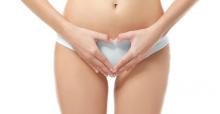
A number of therapies are now being promoted as cures for incontinence, prolapse and menopausal vaginal symptoms such as dryness and pain. these use various energy sources to "rejuvenate" the vagina.
There is little to no scientific data to support these claims and patients should exercise care in their use. Several organisations have issued warnings including the FDA in the USA.
The INTERNATIONAL CONTINENCE SOCIETY issued the following statement on the 5th August 2018:
ISSVD/ICS comments on the FDA communication on the use of energy-based devices to perform vaginal "rejuvenation" or vaginal cosmetic procedures.
The International Society for the Study of Vulvovaginal Disease (ISSVD) and the International Continence Society (ICS), as leading societies in their fields, support the warning issued by the FDA on July 30, 2018, concerning the use of energy based devices (radiofrequency and LASER) for vaginal "rejuvenation" (a not-scientifically defined term), vaginal cosmetic procedures or procedures intended to treat vaginal conditions and symptoms related to menopause, urinary incontinence, or sexual function. (1)
Despite the claim in recent papers that LASER use was cleared by the FDA for the treatment of vulvovaginal atrophy (2), that was not the case (3) (4), as previously noted by the American College of Obstetricians and Gynaecologists (ACOG) in 2016 (5).
concerns on the use of LASER and radiofrequency are no new and have previously been raised by several authors (6) (7), and international societies, including the ACOG (8) and the Society of Obstetricians and Gynaecologists of Canada (9). furthermore, the ISSVD addressed this topic in its recommendations on female cosmetic genital surgery (10).
The claim that the use of these energies for rejuvenation is different from that for the treatment of atrophy in selected patients (postmenopausal, breast cancer, pelvic radiation) is not sustained by evidence and is misleading.
In addition to the FDA warning, recent claims that LASER is a treatment option for women with vulvodynia and lichen sclerosus is not supported by scientific evidence and lacks biological plausibility.
Physicians have ethical responsibility to provide to patients accurate and current information regarding the efficacy and safety of innovative practices, in particular when adopting new approaches on the basis of promotions or marketing (11). In the informed decision-making process relational factors should be considered, as sexuality in postmenopausal women is a complex mosaic of physical, psychological, socioeconomic, and cultural factors. A universal approach limited to vaginal mucosa is insufficient (12).
Based on the available evidence, we recommend against the use of LASER and radiofrequency for the treatment of lichen sclerosus, vulvodynia, urinary incontinence, vulvovaginal atrophy, or for "rejuvenation" (a commercial not scientifically defined term) out of the setting of properly designed clinical trials.
Mario Preti - ISSVD PRESIDENT Pedro Vieira Baptista - ISSVD SECRETARY GENERAL Alex Digesu - ICS TRUSTEE Sherif Mourad - ICS SECRETARY GENERAL
(Approved by the Executive Counsils of the ISSVD and the Board of Trustees of the ICS)
References:
1. FDA Warns Against use of Energy-Based Devices to Perform Vaginal "Rejuvenation" or Vaginal Cosmetic Procedures: FDA Safety Communication. https://www.fda.gov/medicaldevices/safety/alertsandnotices/ucm615013.htm.
2. Streicher LF. Vulvar and vagianl fractional CO2 laser treatments for genitourinary syndrome of menopause. Menopause 2018;25(5):571-573 doi:10-1097/GME.0000000000001049
3. No Title. http://www.accessdata.fda.gov/cdrh_docs/pdf13/k133895.pdf.
4. Vieira-Baptista P, Damaser M, Digesu A, Marchitelli C, Preti M, Stockdale C. to the Editor. menopause. July 2018:1. doi:10-1097/GME.0000000000001165.
5. Fractional Laser Treatment of Vulvovaginal Atrophy and U.S. Food and Drug Administration Clearance. https://www.acog.org/Clnical-guidance-and-publications/position-statemen....
6. Degesu GA, Swift S. laser treatment in urodynaecologya nd themyth of the scientific evidence. Int Urogynecol J. 2017;28 (10):1443-1444. doi 10.1007/s00192-017-3458-5
7. Singa A, Swift S, Khullar V, Digesu GA. Laser vaginal rejuvenation: not ready for prime time. Int Urogynecol J. 2015;26(2):163-164. doi:10.1007/s00192-014-2588-2.
8. ACOG Committee Opinion No 378: Vaginal "rejuvenation" and cosmetic vaginal procedures. Obstet Gynecol. 2007;110(3):737-738. doi: 10.1097/01.AOG.0000263927.82639.9b.
9. Walter J-E, Larochelle A. No. 358-Intravagianl Laser for Genitourinary Syndrome of Menopause and Stress Urinary Incontinence. J Obstet Gynecol Canada. 2018;40(4):503-511. doi10.1016/j.jogc.2017.11.040.
10. Vieira-Baptista P, Almeida G, Bogliatto F, et al. International Society for the Study of Vulvovaginal Disease Recommendations Regarding Female Cosmetic Genital Surgery. J Low Genit Tract Dis. July 2018:1. doi:10.1097/LGT.0000000000000412.
11. ACOG Committee on Ethics. ACOG Committee Opinion No. 352: Innovation practice: ethical guidelines. Obstet Gynecol. 2006;108(6):1589-1595. http://www.ncbi.nlm.nih.gov/pubmed/17138799.
12. da Silva Lara LA, Useche B, Rosa e Silva JC, et al. Sexuality during the climacteric period. Maturitas. 2009;62(2):127-133. doi:10.1016/j.maturitas.2008.12.014.
